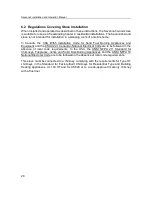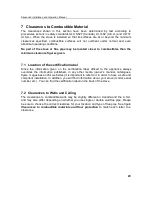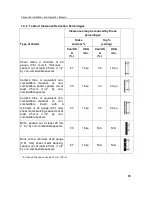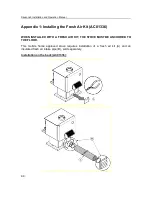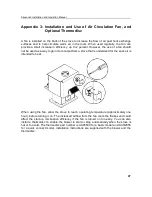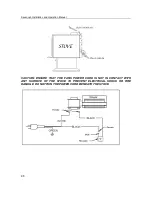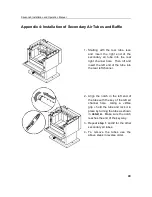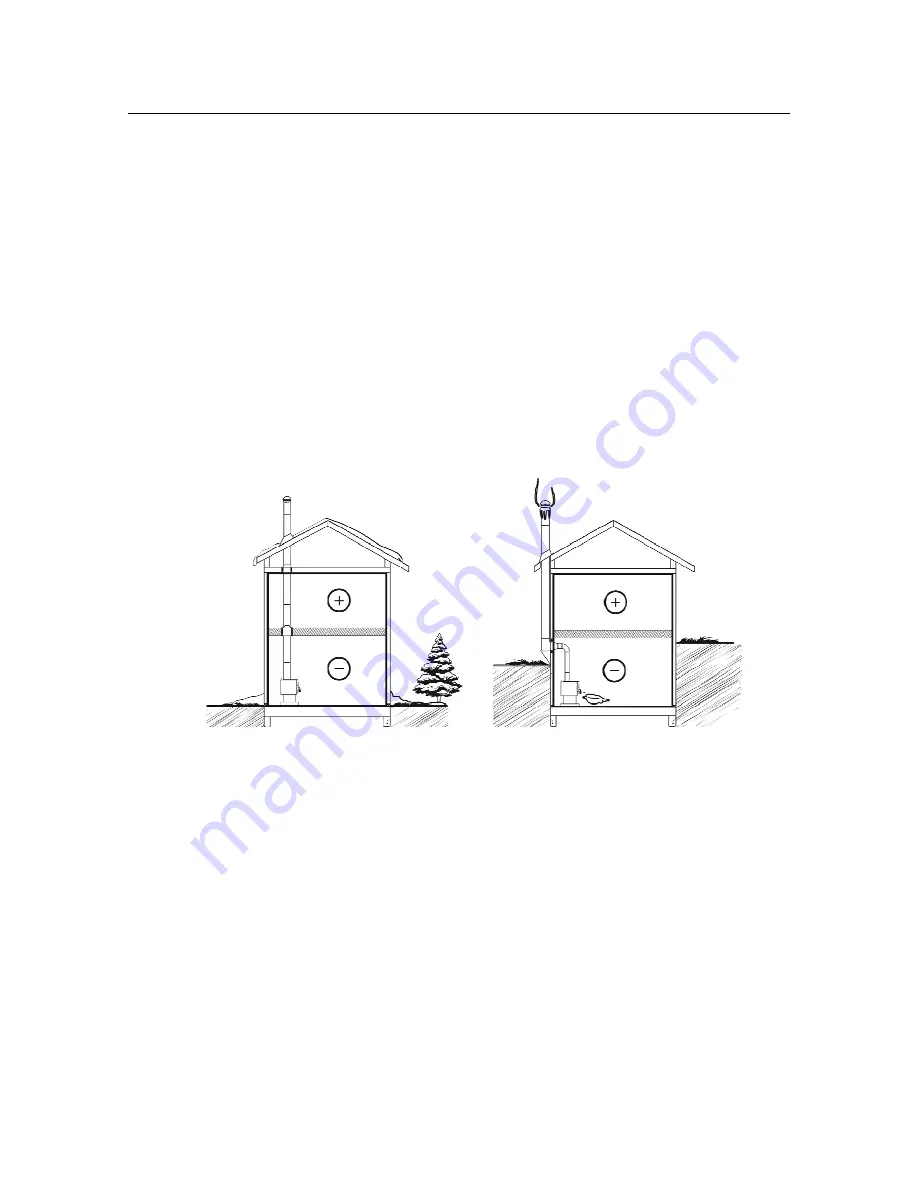
Savannah Installation and Operation Manual
39
8.4 The Relationship Between the Chimney and the House
Because the venting system is the engine that drives the wood heating system, it must
have the right characteristics. The signs of bad system design are cold backdrafting when
there is no fire in the stove, slow kindling of new fires, and smoke roll-out when the door is
opened for loading. There are two guidelines to follow. First, the chimney should be
installed up through the heated space of the house, not out and up an outside wall.
Second, the chimney should penetrate the top of the building at or near the highest heated
space.
8.4.1 Why inside chimneys are preferred
Venting systems that rise straight up from the stove flue collar provide the best
performance. Chimneys that rise inside the warm space of the house tend to provide a
small amount of draft even when there is no fire burning. This means that when you light a
fire, the initial smoke goes up the chimney and strong draft builds quickly as the chimney
flue warms up. Although they are common in North America, chimneys that exit a house
wall and run up outside can cause problems.
Good System Design
Inside chimneys are preferred because even
when no fire is burning, there is normally
upward flow in the system.
Inferior System Design
Outside chimneys are a problem
because when no fire burns they will go
into cold backdraft if the stove is
installed low in the house.
Summary of Contents for ElDorado
Page 8: ...Savannah Installation and Operation Manual 8 ...
Page 34: ...Savannah Installation and Operation Manual 34 Clearances for shield construction ...
Page 45: ...Savannah Installation and Operation Manual 45 Installation on the bottom AC01336 ...
Page 51: ...Savannah Installation and Operation Manual 51 Appendix 5 Exploded Diagram and Parts List ...




